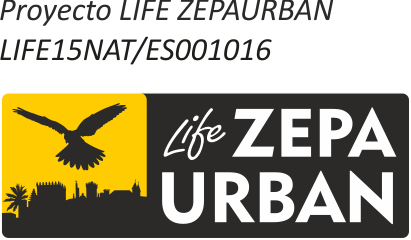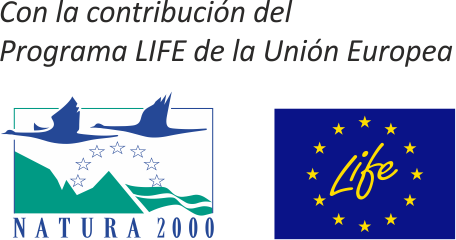The principal objective of this action is to measure the socio-economic impact of the project in the municipalities where the urban SPAs are situated. Two different analyses are planned: a study of the impact on the local population and improvement in their attitude towards the species, and the other orientated towards measuring the impact on tourism in the zone. To achieve this, data will be collected at the start and at the end of the project to measure the differences and changes in attitude obtained through the implementation of the project.
A. Study on the local perception in the urban SPAs towards the lesser kestrel
A study will take place with the inhabitants of the urban SPAs close to the project where perceptions, awareness and understanding of the lesser kestrel and the conservation project to be measured. The results obtained will be used to plan the actions E on awareness-raising that will be based on the reality and characteristics of the zone and its inhabitants. The study will enable:
- Identification of a series of indicators on perception, awareness and understanding of the inhabitants about the lesser kestrel.
- Understand in depth their perceptions of the issues, to understand their motivations and possible opposition to the project.
- Measure the impact of the awareness-raising activities with the inhabitants of the urban SPAs thanks to the development of the identified indicators.
The study will be developed in three phases, based on qualitative in-depth interviews, telephone surveys-PRE and telephone surveys POST.
Phase I: Qualitative in-depth interviews.
Objective: To explore at depth the awareness and knowledge of different inhabitants about lesser kestrels, the conservation activities and the implications that these have in their day-to-day lives.
This qualitative information will enable a questionnaire to be designed for the next phase that will gather information on the concerns and other issues in the involved sectors. Furthermore, it will enable an in-depth knowledge to be obtained about the inhabitants of the zone that can form the basis of an awareness-raising plan based on their concerns and needs.
Methodology: In-depth ethnographic interviews set in a natural context and disaggregated by variables of population size and sector (farming, tourism, owners of buildings and general population). The interviews will be sound-recorded for subsequent analysis and a report will be produced which captures the results obtained, which will serve as the base for the development of the Phase II questionnaire.
Phase II: Telephone surveys-PRE
Objective: To measure the level of knowledge, awareness and opinions of the inhabitants in the specific zones about lesser kestrels and the project, thus to be able to develop indicators for the awareness-raising that can be subsequently measured.
Methodology: A telephone questionnaire will be undertaken with the populations involved. The simple will be from two different groups.
a) Sectors with interests related to the project (owners of buildings, town halls, farmers, building companies etc).
b) General population (over the age of 18) representative by gender, age and profession.
The results will be analysed and a report produced with the information resulting from the survey. The report will include specific recommendations for the design of the communication and awareness-raising campaign and for the development of the actions E of the project.
Phase III: Telephone surveys-POST
Objective: to measure the impact of the conservation project and the awareness-raising actions on the local population.
Methodology: The same questionnaire will be given to the same simple in 2020, at the end of the project to measure the development of the indicators.
A final report will be produced that will indicate how the results of the surveys in phases I and II have been considered in the development of the actions of the project, analysing the changes in the opinions of the inhabitants of the urban SPAs about lesser kestrels in comparison with those of the start of the project.
B. Monitoring the impact of the tourism product based on lesser kestrel.
This aims to measure the degree of success of the product before, during and after its installation, involving those working in tourism, customers of the product and potential clients:
1. Those working in tourism involved with the product
- Telephone surveys: At the start of the last year of the project, telephone surveys will be carried out to understand the diverse aspects around the establishment and functioning of the product, with the aim to adjust or reorganise those aspects necessary to ensure a higher success.
- Qualitative surveys: three months before the end of the project, telephone surveys will be undertaken with those working in tourism and involved with the product to analyse the experience of the product installation, its positive and negative aspects.
2. Customers of the product.
- Written questionnaire: During the final year of the project, in the establishments of the tourism service providers linked to the project and during or immediately after the provision of the service, the opinions of the customers of the lesser kestrel tourism product will be sought.
3. Potential Clients.
- Reports from the Tourism Observatory: The General Directorate of Tourism, through its Tourism Observatory, habitually measures the impact of regional tourism events as a means of measuring the impact of a project.
- Surveys in birdwatching events: In all the national and international birdwatching fairs in which the General Directorate of Tourism participates, surveys will be carried out with potential clients and visitors to measure the level of knowledge about the product and their interest about it, in order to measure the evolution of awareness about it.
Responsible for Implementation: General Directorate of the Environment and General Directorate of Tourism.

